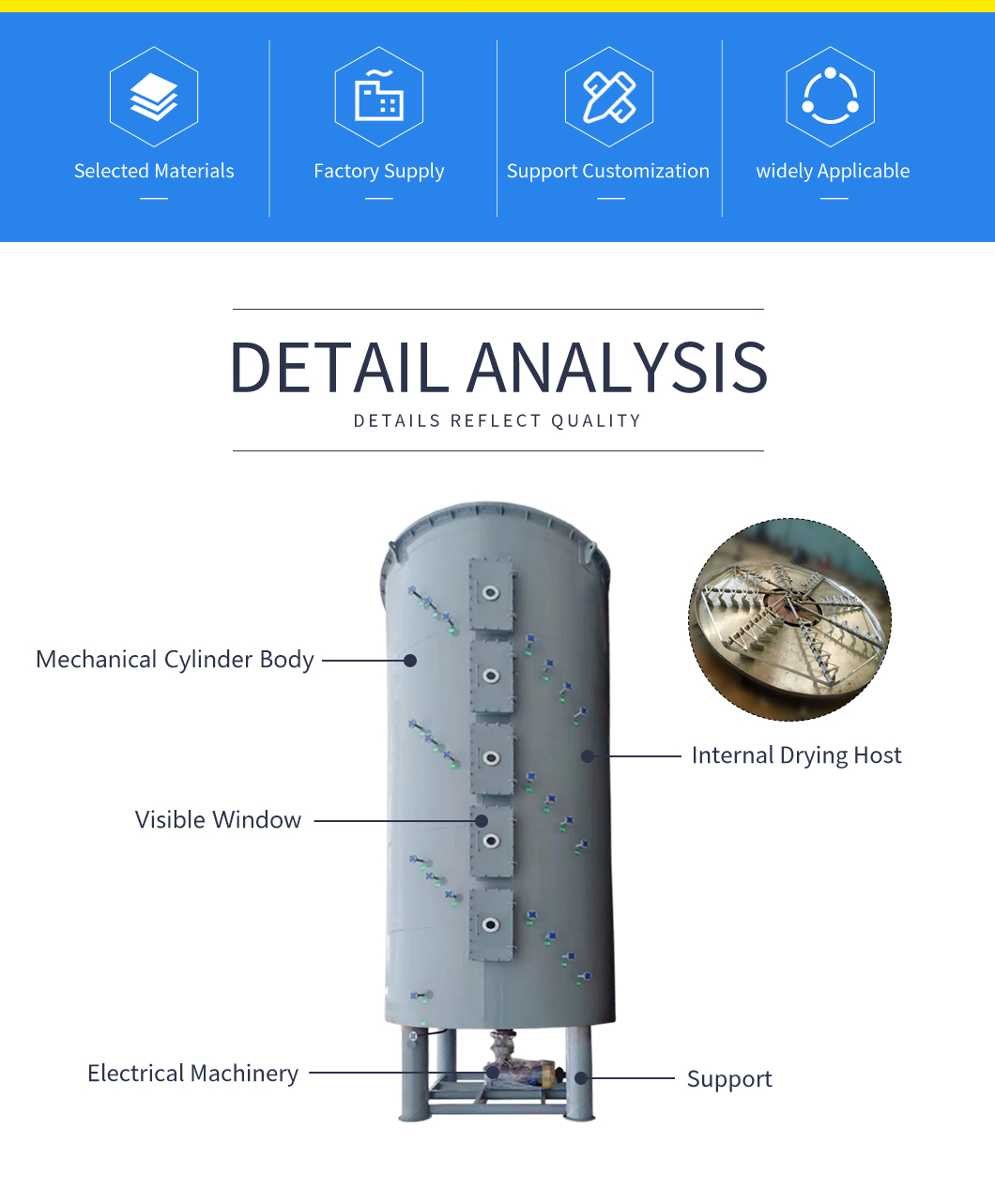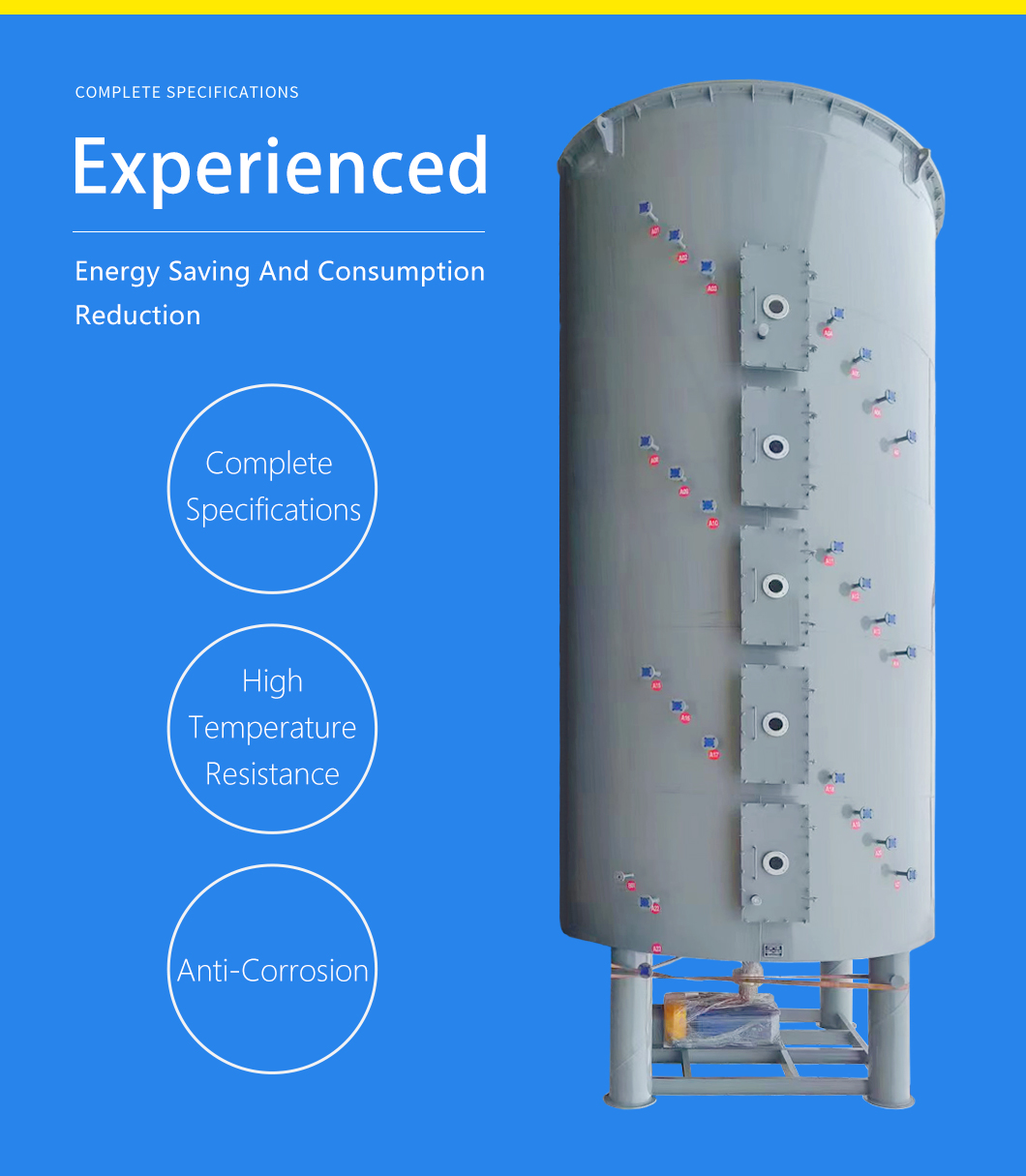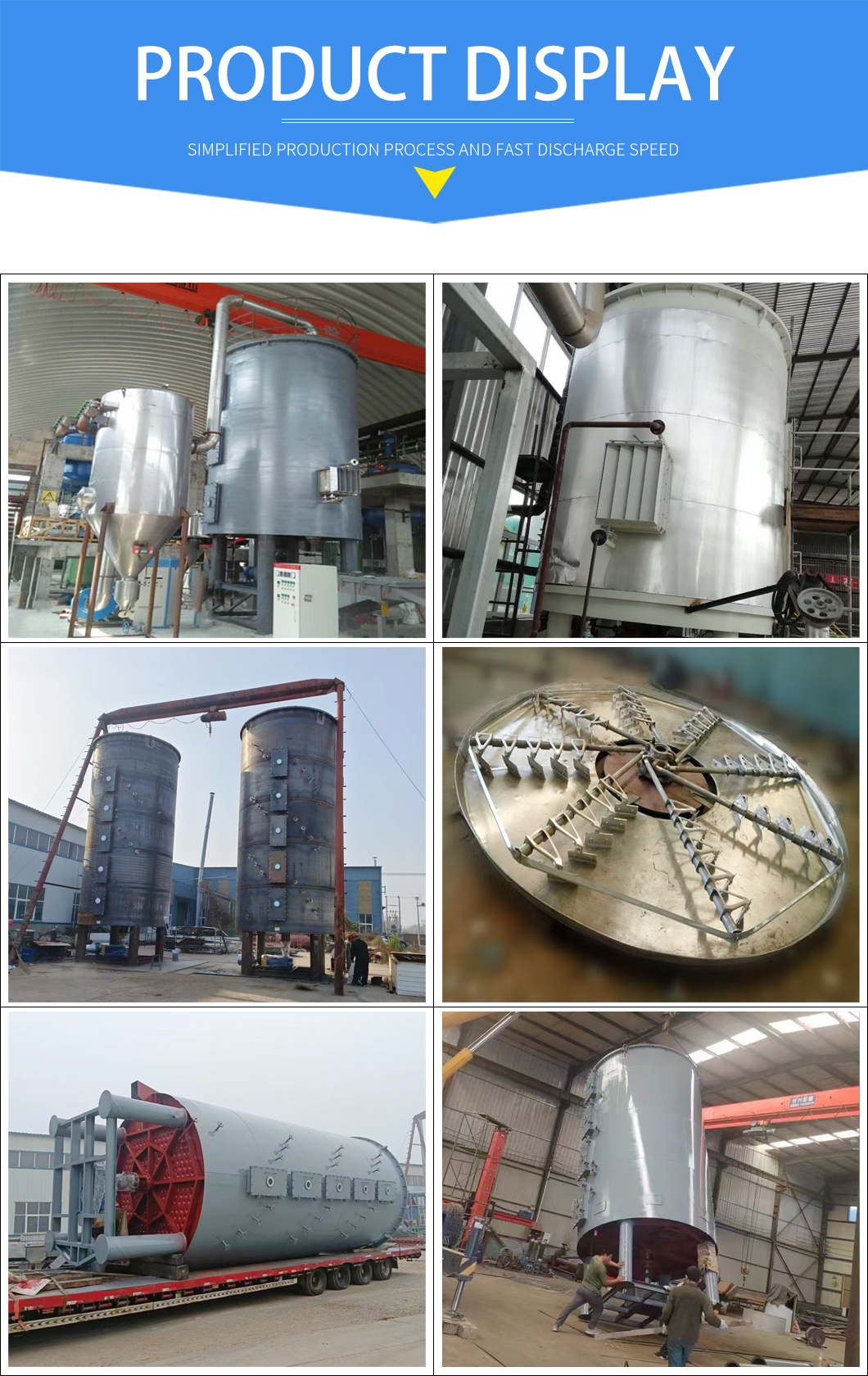
Disc dryer is a common drying equipment, mainly used in industries such as chemical, pharmaceutical, food, metallurgy, etc., for drying liquid, slurry or granular materials. Its working principle is to achieve material drying through a rotating disc.
The following are the main components and working principles of a disc dryer:
Main components:
1. Rotating discs: These are the core parts of the dryer, and materials are placed on these discs.
2. Fixed shell: Surrounding the rotating disc, usually cylindrical in shape.
3. Heat exchange system: Provides heat for the drying process through media such as steam, hot water, or hot oil.
4. Drive device: Drive the disc to rotate.
5. Inlet and outlet system: used for feeding materials and discharging dried products.
working principle:
-The material is quantitatively fed from the feeding system to the surface of the rotating disc of the dryer.
-The disc rotates under the action of the driving device, and the material forms a thin film on the surface of the disc under the action of centrifugal force.
-Heat is transferred to the material through the rotating disc, and moisture is evaporated.
-Steam escapes through the fixed shell and is discharged by the dehumidification system.
-The dried material is scraped off the edge of the disc and collected through the discharge system.
Characteristics of disc dryer:
-Fast drying speed: Due to the material being spread in the form of a thin film, the drying area is large and the drying efficiency is high.
-Flexible operation: It can adapt to the drying requirements of different materials by adjusting the disc speed, drying temperature, and feeding speed.
-Energy saving: High thermal efficiency, suitable for drying heat sensitive materials.
-Compact structure: Small footprint, easy to install and maintain.
The disc dryer requires strict control of various parameters during operation to ensure product quality and drying efficiency. At the same time, it has strong adaptability to materials, so it has a wide range of applications in multiple industrial fields.




